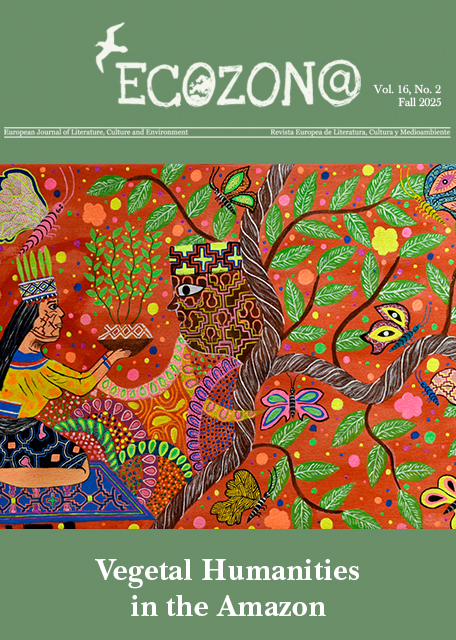Seeds of Change: Negotiating Hierarchies in Seed Picturebook Stories
DOI:
https://doi.org/10.37536/ECOZONA.2024.15.1.5247Parole chiave:
seed stories, critical plant studies, new materialism, agency, plant awareness disparityAbstract
How tiny seeds are represented in children’s literature has long eluded critical attention, although they are frequently foregrounded in the words and images of children’s picturebooks. Drawing upon critical plant studies, new materialism, and Kathryn Parsley’s notion of “plant awareness disparity”, this article analyzes three contemporary seed picturebook stories, namely Jory John and Pete Oswald’s The Bad Seed (2017), Cristiana Valentini and Philip Giordano’s Stay, Little Seed (2020), and Jen Cullerton Johnson and Sonia Lynn Sadler’s Seeds Of Change: Planting a Path to Peace (2011). With a focus on the verbal and visual representations of seeds and their poetic relationship with children, the analysis of the three seed stories reveals the empowering nature of seed narratives which represent seeds as anthropomorphized characters or symbolic motifs, but most essentially, as agentic beings with vibrancy. These stories exhibit the poetic entanglement of seeds and children in an agentic assemblage of collective vulnerability, which not only blurs the line between the human and vegetal, but also negotiates power hierarchies embedded in the world ruled by adults. Thus, I argue that seed stories reveal the agentic power of seeds by crafting various forms of poetic entanglements between seeds and children. Although the child-seed entanglement may not entirely deconstruct an asymmetry between adults and innocent children as well as between matured plants and tiny seeds, this study offers an alternative perspective that counters the perception of seeds and children as vulnerable and controlled.
Downloads
##submission.downloads##
Pubblicato
Fascicolo
Sezione
Licenza
Authors who publish with this journal agree to the following terms:
a) Authors retain copyright and grant the journal right of first publication with the work simultaneously licensed under a Creative Commons Attribution License that allows others to share the work with an acknowledgement of the work's authorship and initial publication in this journal (CC BY-NC for articles and CC BY-NC-ND for creative work, unless author requests otherwise.
b) Authors are able to enter into separate, additional contractual arrangements for the non-exclusive distribution of the journal's published version of the work (e.g., post it to an institutional repository or publish it in a book), with an acknowledgement of its initial publication in this journal.
c) Authors are permitted and encouraged to post their work online (e.g., in institutional repositories or on their website) prior to and during the submission process, as it can lead to productive exchanges, as well as earlier and greater citation of published work (See The Effect of Open Access).










